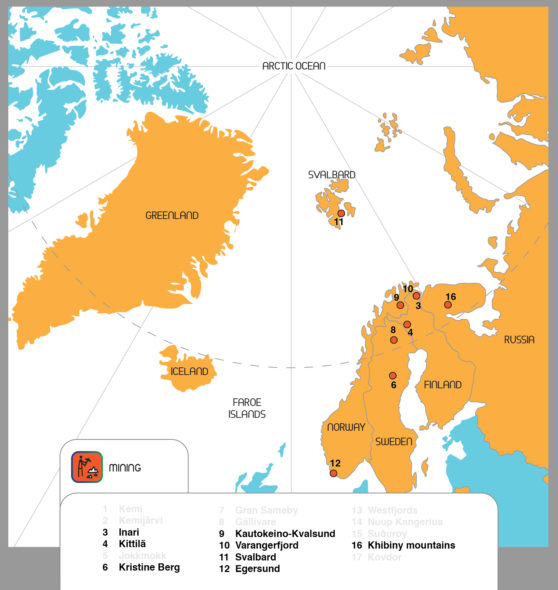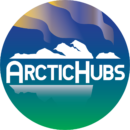![]() There is a rich history of mining in the Arctic stretching back to the early days of the industrial revolution. A diverse suite of mineral resources including iron ore, nickel, copper and quarried stone have been taken and continue to be extracted across the Arctic region.
There is a rich history of mining in the Arctic stretching back to the early days of the industrial revolution. A diverse suite of mineral resources including iron ore, nickel, copper and quarried stone have been taken and continue to be extracted across the Arctic region.
Climate changes have begun to significantly alter the familiar landscapes and backdrops to such extractive industries.
The retreating ice-caps are starting to expose potentially huge new opportunities for mineral exploration.
While the melting of Arctic sea ice opens out the possibility for utilising previously unused sea routes between resources and markets.
In addition, the shift away from hydrocarbon dominance has stimulated a new growth in demand for resources to fuel the ‘green shift’ that it is hoped will dramatically reduce greenhouse gas emissions. This requires different raw materials, such as the 17 rare earth elements (REE) that have a central role in the creation of renewable and sustainable alternatives.
The Arctic is one area in particular that has caught the attention of geologists and global investors alike on this front.
How is ArcticHubs project entering the realm of mining areas?
Set against this background, the ArcticHubs project is looking to research mining hubs in the context of such changes, but equally to consider extractive industries alongside other emerging sectors.
Traditionally, mining development has been predominantly examined at the macro-economic scale of global markets and national development needs. With its multi-scalar, multi-disciplinary and multi-sectoral approach, ArcticHubs project will look to assess not only the economic or developmental viability of mining but view associated socio-cultural and political factors.
Prominent amongst these, it raises questions around ownership, joint ventures, domestic or foreign investment. Policy and solutions devised within the project will acknowledge how a balanced and more sustainable approach, requires mining to be positioning in relation to other land-uses or impacts on the landscape.
Where are the mining hubs located?

Norway (Kvalsund #9, Varangerfjord #10, Svalbard #11, Egersund#12); Sweden (Kristine Berg #6, Gällivare #8); Finland (Inari #3, Kittilä #4); Russia (Khibiny mountains #16)
The nine mining hubs selected by the ArcticHubs project for closer research and analysis, include some long-established sites that are having to face the challenges of adapting to contemporary environmental standards or working within a social licence to operate (SLO) system.
Other hubs are found around the sites of new or expanding mines that will need to co-exist alongside other land-uses and stakeholders.
The research questions at our Arctic mining hubs, address sites at a variety of points along the cycle of mining development. Hence, solutions may relate to issues around the possible emergence of mines, adaptation to existing production methods, or finding adaptations for hubs where production is already finished or coming to an end.
The research will be clustered around some of the following debates:
- Sustainable benefits from mining and how to work around potential ‘resource curse’ to ensure environment, employment and other land-use stakeholders are integrated into policy or practice solutions.
- More specific questions shall consider the sustainable disposal of tailings, additional use of by-products or use of ‘greener’ production methods.
- At other hubs where production is coming to an end, questions focus around the re-green of sites or the potential presentation of industrial and mining heritage.
- Training and education – that allows responses to emerging job opportunities with an eye on the challenge of finding gender balance and the provision of appropriate local skills services.
- A consideration of partnerships and the regulations maintained around mining rights that may allow both local and global businesses to adapt to social licence to operate (SLO) models.
ArcticHubs research moves beyond views of the Arctic region as a new Klondike rush for the extraction of minerals, and considers the complex weave required to find holistic and sustainable solutions to land-use and resource development.
